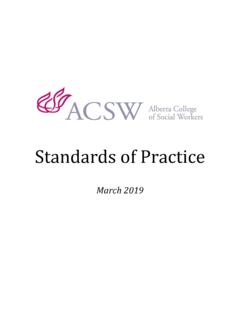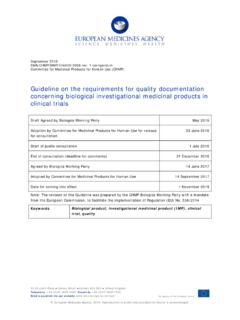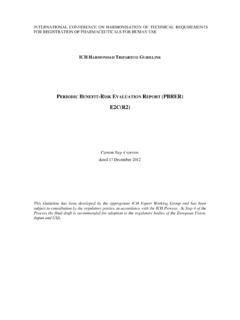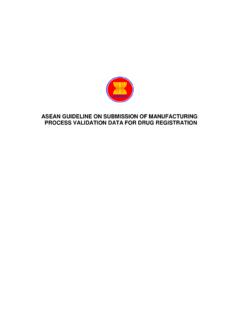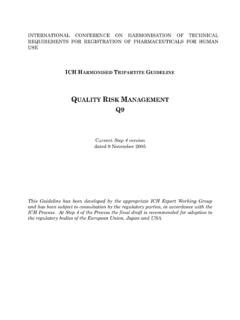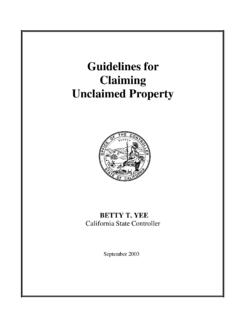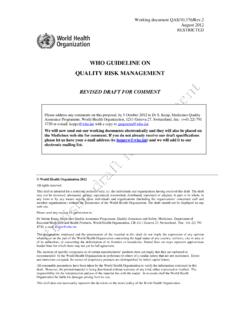Transcription of Continuing Competence Program Member Handbook
1 Continuing Competence Program Member Handbook CONTENTS BACKGROUND .. 1 Competence Program HISTORY .. 2 THE Continuing Competence Program .. 4 STEP ONE: REFLECTION AND SELF-ASSESSMENT .. 5 STEP TWO: PLAN AND IMPLEMENT .. 7 STEP THREE: REVIEW .. 9 STEP FOUR: REPORT .. 10 PRACTICE PROFESSIONAL DEVELOPMENT ACTIVITIES .. 11 Continuing Competence CHART APPROVED BY COUNCIL OCTOBER 24, 2014.. 12 ANNUAL ONLINE CREDIT REPORTING ..14 PORTFOLIO .. 17 NARRATIVE SELF-ASSESSMENT EXAMPLE ..19 LEARNING PLAN EXAMPLE ..21 UPLOADING CATEGORY A CLARIFICATION OF COUNTING EXTENUATING INFORMATION FOR PROVIDERS OF Continuing 1 BACKGROUND In 2003, the Social Workers Profession Regulation was proclaimed under the Health Professions Act (HPA). The HPA requires that all regulated health professionals demonstrate that they are maintaining and enhancing their Competence throughout their careers.
2 The HPA outlines many of the values that the Alberta College of Social Workers (ACSW) rigorously promotes, such as the protection of clients from unskilled or unethical practice, and a commitment to professional and personal development throughout ones career. Under the Health Professions Act, the ACSW must establish, maintain and enforce standards for Continuing Competence . With input from social workers across the province, the ACSW s Competence Committee developed a Program that allows registered social workers to effectively document their lifelong journey of professional development. All registered social workers must participate in the Program in order to receive their annual practice permit. The social work Code of Ethics (CASW 2005) states: Social workers respect a client s right to competent social worker services.
3 Social workers analyze the nature of social needs and problems, and encourage innovative, effective strategies and techniques to meet both new and existing needs and, where possible, contribute to the knowledge base of the profession. Social workers have a responsibility to maintain professional proficiency, to continually strive to increase their professional knowledge and skills, and to apply new knowledge in practice commensurate with their level of professional education, skill and competency, seeking consultation and supervision as appropriate. Competence goes beyond acquiring formal education and qualifications. It involves constantly and thoughtfully reflecting on our individual practices and seeking out new opportunities to grow as helping professionals. 2 Competence Program History Several factors played a part in the need for development of a Continuing competency Program .
4 The Agreement on Internal Trade (AIT) came into force on July 1, 1995, impacting over 400 occupational regulatory bodies in Canada, including the Alberta Association of Registered Social Workers (AARSW). The aim of the agreement was the removal or reduction of interprovincial barriers to the movement of workers, goods, services and capital across provincial boundaries. Criteria in the agreement stipulated that registration procedures should relate principally to Competence . The introduction of the Health Professions Act (HPA) was another key factor necessitating development of a Competence Program . Under the HPA, the AARSW became the Alberta College of Social Workers (ACSW) with a key role [t]o establish, maintain and enforce standards of practice, ethics, registration and Continuing Competence for the practice of the regulated profession.
5 As a self-regulated profession, the responsibility to demonstrate accountability to the public, for the services social workers provide, directly linked to the need for a Competence Program . The Practice Review Board of the Alberta Association of Registered Social Workers began researching continued Competence models in 1997 in anticipation of new legislation coming into effect for Alberta social workers. The board explored various models, concepts, and reporting structures across a number of professions. Continuing Competence was differentiated from Continuing education with the determination that Continuing Competence was more reflective of what social workers do to maintain Competence throughout their careers. In 1999, twenty-one focus groups were held across the province and information compiled to help inform development of criteria and basis for a Continuing Competence Program .
6 Members were also invited, through a series of articles in The Advocate, to provide feedback. Information gathering focused on the following four key questions: 3 1. How should Competence be defined for social workers? 2. How do social workers maintain Competence ? 3. How should Competence be assessed and monitored for social workers? 4. How often should Competence be assessed for social workers? After reviewing a number of models and processes for continued Competence , the Practice Review Board found that the portfolio model which calls for self-directed lifelong learning, best represented a basis for attempting to assure the continued Competence of social work professionals. The portfolio method included six components: 1. Reflection and professional self-assessment 2. Development of a learning plan 3.
7 Submission of the learning plan for verification 4. Implementation of professional development 5. Self-evaluation of learning plan outcomes 6. Submission of portfolio or records of professional development activities Throughout 2001 a Handbook and tools were developed. The system of categorizing learning activities was drawn from a model used by the Association of Social Work Boards with which the Alberta Association of Registered Social Workers became affiliated in 1998. The Health Professions Act was proclaimed in March 2003. Social workers obtained professional designation under the HPA effective April 1, 2003. The Practice Review Board was renamed the Competence Committee. The Member guideline book and self-assessment tools for the Program were completed in May 2003. Colleges were given five years from the date of the proclamation of their profession to develop a Continuing Competence Program .
8 The ACSW decided to use the first few years to test the model and the material and to seek input from the membership during the implementation period. RSWs with a registration renewal date of July 1, 2004 were the first group of social workers to undertake the registration renewal process as required under the HPA. The Program was evaluated through a benchmark study in 2005 and again formally evaluated in 2008. 4 THE Continuing Competence Program The Alberta College of Social Workers recognizes the vast diversity of its members professional activities. Social workers practice in many different settings, using a variety of methods and interventions, and offering a spectrum of specialized skills to the populations that they serve. The Continuing Competence Program is designed to accommodate these differences while promoting commonalities.
9 This is done by encouraging social workers to reflect on their practice through a consistent set of values as embodied in the Code of Ethics and Standards of Practice. These values provide the basis for the Continuing Competence Program and the various tools members utilize to document their professional learning journey. The ACSW recognizes that most RSWs already reflect on their practice and continually involve themselves in activities that increase their professional Competence . The Continuing Competence Program is designed to complement this process. The Program is designed to provide a structure to allow and facilitate social workers to properly document their professional learning journey. The challenges faced in practice, coupled with the commitment to ethical practice, press social workers into a journey of thoughtful lifelong learning.
10 The Competence Program involves a four step process: STEP ONE: REFLECTION AND SELF ASSESSMENT STEP TWO: PLAN AND IMPLEMENT STEP THREE: REVIEW STEP FOUR: REPORT 5 STEP ONE: REFLECTION AND SELF-ASSESSMENT WHAT S INVOLVED: 1. REFLECTING ON SOCIAL WORK PRACTICE 2. COMPLETING A SELF-ASSESSMENT WHAT S HELPFUL: 1. CODE OF ETHICS & STANDARDS OF PRACTICE 2. SELF-ASSESSMENT FORM 3. CURRENT JOB DESCRIPTION 4. MOST RECENT PERFORMANCE EVALUATION 5. FEEDBACK FROM COLLEAGUES & CLIENTS The Competence Program requires this step of the process to be completed in a structured manner. By using the Code of Ethics and the Standards of Practice as guides, members can reflect upon and assess social work practice, then record strengths and areas for continued growth and development on the Self-Assessment Form.

